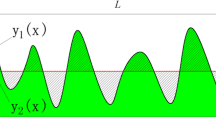Abstract
The conventional model predicts that the surface roughness decreases with feed and fits well with the measured results, even in the micro turning process. But it is observed that surface roughness increases with feed decreases when the feed is in the range of micro scale. Based on the analysis of peak-to-valley formation process, a quadratic prediction model, which divides the height of peak-tovalley into two parts: one part is piled in front of the rake face while the other is piled on the flank face and is more accurate, is established considering the effect of tool geometry, cutting parameters and pile-up of work piece. The prediction model is calibrated and verified via two groups of micro turning experiments. Results show that size effect of specific cutting energy increases the surface roughness at small feeds. The difference between the theoretical and measured results at small feeds is mainly induced by the pileup of work piece material around the rear face. The best surface roughness can be obtained when the feed per revolution equals 0.1 time of the cutting edge radius.
Similar content being viewed by others
References
Weulel, H., Huntrup, V., and Tritschler, H., “Micro-Cutting of Steel to Meet New Requirements in Miniaturization,” CIPR Annals — Manuf. Techn., Vol. 50, No. 1, pp. 61–64, 2001.
Raju, K. V., Murali, K., Janardhana, G., Kumar, R. P. N., and Rao, V. D. P., “Optimization of Cutting Conditions for Surface in CNC End Milling,” Int. J. Precis. Eng. Manuf., Vol. 12, No. 3, pp. 383–391, 2011.
Shaw, M. C., “Metal Cutting Principles,” Oxford: Oxford University Press Inc., New York, pp. 448–456, 2004.
Dogra, M., Sharma, V. S., Sachdeva, A., Suri, N. M., and Dureja, J. S., “Tool Wear, Chip Formation and Workpiece Surface Issues in CBN Hard Turning: A Review,” Int. J. Precis. Eng. Manuf., Vol. 11, No. 2, pp. 341–358, 2010.
Cheung, C. F. and Lee, W. B., “A Theoretical and Experimental Investigation of Surface Roughness Formation in Ultra-precision Diamond Turning,” Int. J. Mach. Tool. Manu., Vol. 40, No. 7, pp. 979–1002, 2004.
Wang, X. and Feng, C. X., “Development of Empirical Models for Surface Roughness Prediction in Finish Turning,” Int. J. Adv. Manuf. Tech., Vol. 20, No. 5, pp. 348–356, 2002.
Mian, A. J., “Size Effect in Micromachining,” Manchester: The University of Manchester, pp. 121–125, 2011.
Liu, K. and Melkote, S. N., “Effect of Plastic Side Flow on Surface Roughness in Micro Turning Process,” Int. J. Mach. Tool. Manuf., Vol. 46, No. 14, pp. 1778–1785, 2006.
Aramcharoen, A. and Mativenga, P. T., “Size Effect and Tool Geometry in Micromilling of Tool Steel,” Precis. Eng., Vol. 33, No. 4, pp. 402–407, 2009.
Williams, J. A., “Analytical Models of Scratch Hardness,” Tribol. Int., Vol. 29, No. 8, pp. 675–694, 1996.
Studman, C. J., Mooret, M. A., and Jones, S. E., “On the Correlation of Indentation Experiments,” J. Phys. D, Vol. 10, No. 6, pp. 949–956, 1997.
Ichimura, H. and Ishii, Y., “Effects of Indenter Radius on the Critical Load in Scratch Testing,” Surf. Coat. Tech., Vol. 165, No. 1, pp. 517–521, 2003.
Gilespie, L. K. and Blotter, P. T., “The Formation and Properties of Machining Burrs,” ASME J. of Eng. Ind., Vol. 98, No. 1, pp. 66–74, 1976.
Jardret, V., Zahouani, H., Loubet, J. L., and Mathia, T. G., “Understanding and Quantification of Elastic and Plastic Deformation During a Scratch Test,” Wear, Vol. 218, No. 1, pp. 8–14, 1998.
Bucaille, J., Felder, L. E., and Hochstetter, G., “Mechanical Analysis of the Scratch Test on Elastic and Perfectly Plastic Materials with the Three Dimensional Finite Element Modeling,” Wear, Vol. 249, No. 5–6, pp. 422–432, 2001.
Ahn, B. W. and Lee, S. H., “Characterization and Acoustic Emission Monitoring of AFM Nanomachining,” J. Micro. Mech. Micro. Eng., Vol. 19, No. 4, pp. 1–6, 2009.
Abdelmoneim, M. Es. and Scrutton, R. F., “Sub-surface Damage and Edge Sharpness in Finish Machining,” Wear, Vol. 27, No. 1, pp. 35–46, 1974.
Taminiau, D. A. and Dautzenberg, J. H., “Bluntness of the Tool and Process Forces in High-Precision Cutting,” Manuf. Techn., Vol. 40, No. 1, pp. 65–68, 1991.
Author information
Authors and Affiliations
Corresponding author
Rights and permissions
About this article
Cite this article
Zhang, T., Liu, Zq., Shi, Zy. et al. Size effect on surface roughness in micro turning. Int. J. Precis. Eng. Manuf. 14, 345–349 (2013). https://doi.org/10.1007/s12541-013-0048-4
Received:
Accepted:
Published:
Issue Date:
DOI: https://doi.org/10.1007/s12541-013-0048-4




